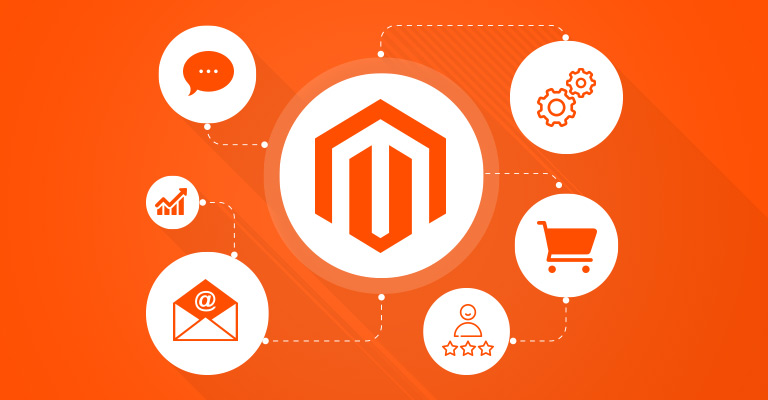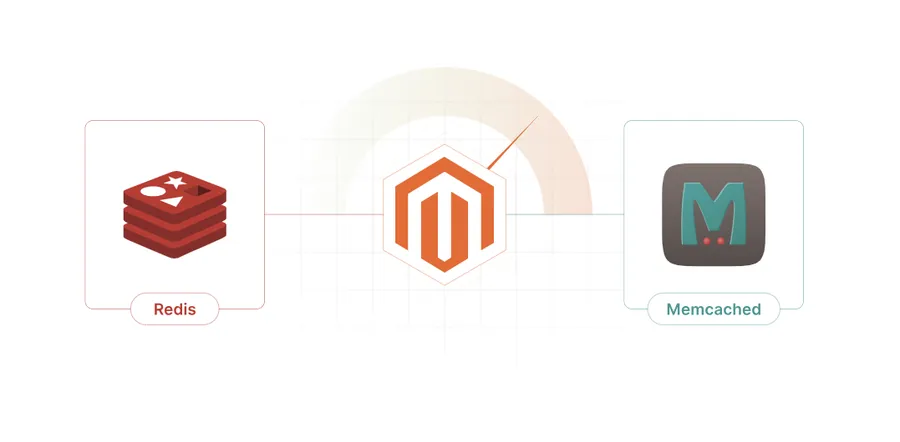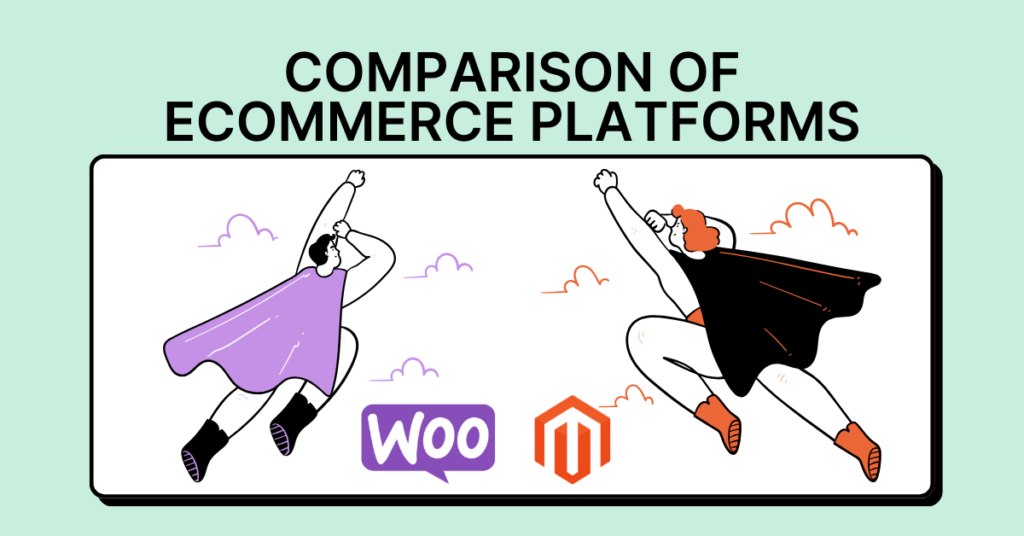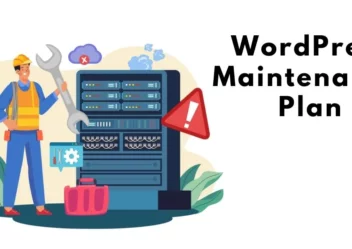Magento vs WooCommerce Performance: Key Differences
The choice of base platform is critical for business success in the constantly moving eCommerce field. Magento vs WooCommerce are two of the most popular contestants in this space, serving different business scales and requirements.
Each platform has distinctive features that contribute much to performance, user experience, and overall efficiency. WooCommerce is known to be an extremely user-friendly and affordable WordPress plug-in, thus suitable for companies from small to medium scale. At the same time, Magento is under the spotlight for holding high-performance capability aimed at the needs of big organizations.
In this blog post, we’ll explore the key performance differences between Magento vs WooCommerce performance, exploring aspects such as resource consumption, product handling, order management, scalability, customization options, user experience, security measures, caching mechanisms, and SEO capabilities.
Let’s get started!
Claue – Clean and Minimal Magento Theme
We provide an amazing Magento theme with fast and responsive designs. Let’s find out!
Magento vs WooCommerce Performance: Quick Overview
Both WooCommerce vs Magento are considered leading platforms to build an online store, though they meet different needs and are different in their performance level.
WooCommerce is based on the WordPress platform and is praised for being quite user-friendly and low in cost, making it just right for small to medium-sized businesses just getting started. Overall, WooCommerce does a good job for smaller shops with more minimal needs. Larger stores tend to feel this, especially as they add in a plethora of new features and products to their store; however, depending upon their usage of plugins, performance usually suffers. Making your WooCommerce store performant is actually achieved via proper plugin selections, updating of their versions regularly, and probably venturing into other faster hosting too. Magento: By default, Magento is suited for bigger and more enterprise-oriented businesses.

It is a very powerful platform, very feature-rich and scalable. One of the reputed features of Magento is its performance: great with big catalogs, and large volumes of traffic. With all this power, however, comes cost. Magento could be much more complex in terms of its setting up and managing, which, usually, demands more technical skills compared to other similar platforms. On the top, Magento could be more expensive rather than WooCommerce because big businesses hire a developer to maintain and customize.

Magento vs WooCommerce Performance: Backend Performance Analysis
1. Security and Updates

Magento: Magento has an excellent record in terms of security, considering how updates and patches are quite regular in addressing vulnerabilities. However, keeping a Magento store secure requires periodic security audits and being proactive.
WooCommerce: Since it is part of WordPress, WooCommerce inherits most of the security features of WordPress and the active community that is always contributing to finding bugs and patching them.
2. Resource Consumption and Server Requirements
Magento: Known to be resource-intensive, Magento requires powerful servers with ample CPU, RAM, and storage. This requirement is due to its complex architecture and a long list of features. While Magento does have robust caching mechanisms, it still requires optimized hosting for large catalogs and high volumes of traffic.
WooCommerce: This, being a WordPress plugin generally requires fewer server resources. Shared hosting environments can accommodate it quite easily due to which the little players find it quite reasonable. However, as the store grows, and multiple plugins are added, getting a more robust server is only obvious to avoid slower performance altogether.
3. Product Handling and Catalog Management
Magento: Magento excels in managing large catalogs with complex product attributes, variations, and configurations. Its advanced catalog management features, including bulk editing and import/export tools, streamline product handling for businesses with diverse inventories.
WooCommerce: Although WooCommerce can bear a good enough number of products, its catalog management capabilities are perhaps not as mature for businesses that have highly complex product structures as Magento is. However, different plugins extend WooCommerce’s capability to handle big catalogs.
4. Order Management and Fulfillment
Magento: Integrated into Magento is an order management system that supports order tracking, shipping integrations, and automated workflows, while also being able to handle complex ordering scenarios with flexibility in fulfillment process management.
WooCommerce: WooCommerce does feature some basic functionality for order management, but many of the important features one needs are not quite there yet compared to Magento’s. Nevertheless, there are lots of plugins to augment WooCommerce’s Order Management and enable further features, from automated order notification to advanced shipping integrations and inventory control.
5. Scalability and Performance Under Load
Magento: Magento is well-known for its scalability, mainly its Magento Commerce or Enterprise edition. It can handle massive traffic spikes and high volumes of orders, which are suitable for fast-growing businesses. However, it requires proper configuration and optimization to get the most out of performance under load.
WooCommerce: WooCommerce can scale for moderate traffic. However, at high traffic volume, there might be limitations to the performance of WooCommerce in contrast with Magento. Scaling it on a dedicated server or cloud hosting will bring in significant improvements in scalability and performance.
6. Customization and Extensibility
Magento allows deep customizations; it is developed on a flexible architecture with thousands of extensions. However, that can add a new level of management headaches, although all the flexibility empowers businesses to get what they require by customizing specific features in particular.
WooCommerce: As an extension to WordPress, WooCommerce uses the rich ecosystem of themes and plugins in WordPress, thus making it very customizable and extensible. Therefore, businesses can easily extend any functionality for their stores.
7. User Interface and User Experience
Magento: The Magento backend is not user-friendly for anyone who is new to the system. Although Magento is packed with features, mastering the use of those features can be difficult.
WooCommerce: The backend interface of WooCommerce is more intuitive and user-friendly, especially for users who have prior experience working with WordPress. This can enhance productivity by reducing the need for extensive training.
Magento vs WooCommerce Performance: Caching Mechanisms
Caching is among the most widely used techniques for performance improvements in eCommerce platforms like Magento vs WooCommerce. Caching reduces the frequency of generation of the same content by storing frequently accessed data in memory, hence improving page loading speed and enhancing the overall user experience.
Magento Caching Mechanisms
Magento boasts a robust caching system that is multi-level abstracted and includes:

- FPC: Caches the entire HTML page, thereby reducing the server load and improving the response time.
- Varnish Cache: Full-featured cache server that sits on top of FPC and helps in caching static content/queries and database queries at the server level.
- Opcode Cache: Caches the PHP bytecode, hence providing quicker execution of PHP scripts.
- Redis and Memcached: In-memory data storage for caching sessions, database queries, and other frequently accessed data.
WooCommerce Caching Mechanisms
WooCommerce, being a plugin to WordPress, uses the caching provided by WordPress and also provides further options through plugins:
- WordPress Object Cache: Provides caching for the frequently accessed database objects like posts, comments, and users.
- W3 Total Cache: A full-fledged caching plugin that provides different levels of caching, namely page cache, browser cache, object cache, and database cache.
- Redis and Memcached: Can be used as object caches for WooCommerce, providing faster data retrieval.
- WP Super Cache: Another well-liked caching plugin, focused on static HTML caching that improves page load times for static content.
Magento vs. WooCommerce: SEO Capabilities

Magento vs WooCommerce are both popular eCommerce platforms with strong SEO capabilities. However, they have different strengths and weaknesses that cater to different types of businesses. Here’s a detailed comparison:
| Feature | Magento | WooCommerce |
| URL Structure | Highly customizable and SEO-friendly out-of-the-box | Requires plugins for advanced URL customization |
| Product Page Optimization | Excellent control over product titles, descriptions, and meta data | Basic control, but can be enhanced with plugins |
| Sitemaps | Built-in XML sitemap generator | Requires plugins for advanced sitemap generation |
| Canonical Tags | Built-in support | Requires plugins for advanced canonical tag management |
| Mobile Optimization | Excellent mobile responsiveness and performance | Highly mobile-friendly, but may require optimization for specific themes and plugins |
| Image Optimization | Basic image optimization tools, but may require additional plugins for advanced features | Basic image optimization, but can be enhanced with plugins |
| Schema Markup | Basic schema markup support, but may require plugins for advanced implementation | Basic schema markup support, but can be enhanced with plugins |
| Blog Integration | Built-in blogging platform with SEO capabilities | Requires plugins for blogging functionality |
| Multilingual Support | Built-in support for multiple languages and currencies | Requires plugins for multilingual support |
| Scalability | Highly scalable and can handle large catalogs and high traffic | Can be scaled with proper hosting and optimization |
Final Thoughts
The choice between Magento vs WooCommerce will, therefore, depend on the specific needs and goals of a company. Small and medium-sized businesses that want an easy entrance into e-commerce without significant technical demands would, therefore, find WooCommerce an attractive option in terms of its simplicity and affordability. However, for businesses that expect rapid growth or maintain large inventory quantities, Magento’s advanced features and scalability might better fit their long-term goals. Each system has unique pros and cons; thus, understanding these nuances is instrumental in making a knowledgeable choice that will help a business grow and thrive within the competitive online market.
Read more: 9+ Best Shopify Countdown Timer Apps



